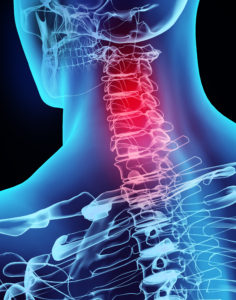Age-Related Neck & Radiating Arm Pain – A Common Problem For 60+ Adults
Posted on March 02, 2019
As a Board Certified Interventional Pain physician, I have seen many patients over the years for various pain, much of it originating from the back. Although the back can be a source of pain (that can be debilitating and excruciating), another common source of pain stems from the neck.
Neck pain, affecting over 85 percent of ages 60+ adults, most often relates to the aging process – something none of us can avoid! Like the rest of the body, the discs and joints in the neck (cervical spine) slowly degenerate with age. Cervical Spondylosis, which is actually degeneration and arthritis of the neck, is the most common form of age-related neck pain.
Cervical Spondylosis, essentially age-related degeneration of the neck, can cause:
- Neck Pain
- Muscle spasms in the neck and shoulders
- Pain in the arm
- Weakness or numbness in the arms or hands
- Sounds or sensations when turning the head
- Headaches at the base of the skull
Like the “back bones,” the neck includes an intricate blend of vertebrae, discs and joints. Known as the Cervical Spine, it makes up the top portion of the spinal column. Beginning at the base of the skull, it is made up of the first seven “vertebrae.” These small vertebra work together to support and rotate the head.
Overall, the spinal column consists of 24 stacked bones that support the body. In its center, it houses a tunnel of nerves. While these nerves serve the important task of carrying messages from the brain, pain signals are generated here, too.
Between each vertebrae are inter-vertebral discs, which serve as shock absorbers. With age, the nerves that branch out from the center canal can become “pinched” as the joints wear down and/or the protective padding between them thins.
When these nerves are squeezed, pain is experienced. Initially, Cervical Spondylosis can cause pain and stiffness in the neck.
Over time, Cervical Spondylosis can cause the spinal column to narrow. As the spine’s inner tunnel narrows, symptoms may also lead to numbness and weakness in the fingers, hands, and arms.
And, it’s not just the cushions between the discs that wear down. As the spinal bones age, they decline in height and can move out of position. This is known as “listhesis,” which means slippage. The aging process can also dry out the inter-vertebral discs, causing disintegration, loss of height, and weakened discs. As the cushioning between discs wears, the result can be bone rubbing against bone. This can cause bone spurs to form, leaving less space for the spinal cord.
Many people who have Cervical Spondylosis have no symptoms. When mild symptoms emerge, conservative measures may include medications such as muscle relaxers and/or acetaminophen combined with NSAIDs for relief. Additional measures, such as physical therapy, massage or ice/heat applications may help to ease worsening symptoms.
In order to appropriately treat Cervical Spondylosis, diagnostic tests may be ordered to verify it as the true culprit. These may include X-rays, MRIs and/or CT scans, or Electromyography (EMG).
In most cases, surgery is not recommended to treat Cervical Spondylosis. (Surgery is only advised for patients who have developed neurologic symptoms, such as arm weakness, numbness, or falling.)
With modern technology and techniques in pain management, successful methods are available to help patients regain ease of motion and live pain free. These options include:
Cervical facet joint injections
Medial nerve branch blocks
Radiofrequency Ablation
Cervical epidural injections
Cervical nerve root injections
The key is to seek appropriate treatment through an experienced physician. An interventional pain management physician uses advanced methods to help each individual enjoy prompt and long-term results, without the need for invasive (surgical) procedures.
At Advanced Pain Management & Spine Specialists, our physicians help patients avoid surgery and a life of narcotics. Most injections are given with the aid of fluoroscopic guidance. A fluoroscope shows detailed internal structures in ‘real time’ so the doctor sees the precise site of inflammation or damage.
If you’re tired of living with the limitations and discomfort of neck stiffness and pain, resolving it may be simpler than you realize. Begin by calling 239-437-8000 to schedule an examination with one of our Board Certified physicians.
